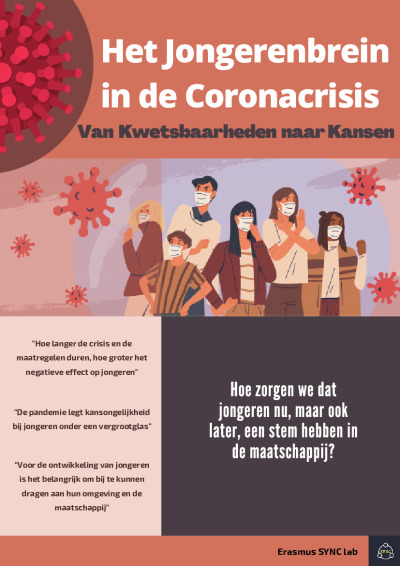In our research on brain development adolescents are typically involved as participants, but rarely asked for their expert opinion. It’s our vision that science becomes better when conducted together with societal partners, including through youth panels and co-creation. The current pandemic presents a challenge to achieve such co-creation, as live get togethers are no longer desirable. Instead of postponing and waiting for better times, we decided to think of innovative ways to start co-creation in times of COVID-19. We designed a virtual format for youth expert panel sessions. In this blog I’d like to share some lessons we learned while setting up and conducting our first virtual youth expert panel. We hope to inspire other researchers to include youth experts by sharing our experiences and the lessons we learned.
What better topic to choose for virtual session than Social Media use? Currently, I am setting up a study on longitudinal associations between social media use, wellbeing and brain structure across adolescence. Social media usage among young generations is a much-debated topic. What exactly happens in brain development remains to be an unanswered question. Popular media often states that the effects of social media could be detrimental for the developing brain, but it might as well be enhancing social life and brain development. Involving the subjective experience of the target audience in the process of constructing the study could enhance the quality of the research. To this end, we were eager to learn experiences and motivations from the real social media experts: adolescents themselves
Wanted: Social Media Experts!
First things first: how to find adolescents who are willing to share their expertise with us? For our panel session, we aimed to recruit nine to twelve 13-16-year-old adolescents, which would allow us to have three to four parallel small group discussions. We decided to recruit adolescents through our own social media platforms (twitter, Linkedin, Facebook and Instagram) by using an informative and appealing flyer (see figure). Although in general we received enthusiastic responses to the flyer, the response rate remained rather low. In the end, we received 6 registrations.
Lessons learned:
The most important lesson learned here is that we do not have enough adolescents within our personal social network, highlighting the need for a broader platform to recruit adolescents for co-creation. Currently, the SYNC lab is setting up the YoungXperts platform to gather and enthuse youth for citizen science. Other ways to increase registration rates might be:
* financial reimbursement (in addition to/instead of gadgets)
* shorter time frame (the panel session was scheduled for three hours).
* our registration form asked email addressed to contact adolescents, but we learned that phone numbers might be a better alternative to keep contact
Designing the virtual format
Before actually asking adolescents to share their experiences, we thought about the aims of our panel session and developed appropriate virtual formats. Our aims were three folded:
1) share our knowledge on brain development during adolescence and the way the brain responds to social feedback using an interactive workshop on adolescent brain development;
2) learn about their subjective experiences and motivations regarding social media use, by means of a brainstorm session;
3) use adolescents’ expert perspective on our current measures of social media using co-evaluation of our current questionnaires
The entire panel session took place in the videoconferencing software Zoom, but the format is also suitable for different software such as MS Teams.
Lessons learned:
We learned that zoom might not be the best solution, as none of the adolescents had prior experience with this software program (they used MS Teams more regularly). Moreover, some of the utilities of Zoom (e.g., annotating on shared screens) did not work with Chromebook, whereas a lot of (Dutch) adolescents work with Chromebook at school.
Part 1: Interactive workshop on adolescent brain development
To share our knowledge on adolescent brain development, we included an interactive workshop at the start of the virtual panel session. The aims of this part are twofold: to 1) bring our knowledge to society and 2) provide a common ground for the brainstorm and co-creation sessions. The interactive workshop consisted of a 30-minute laymen lecture including our latest scientific findings combined with relevant videos. To make it more interactive, we included several poll questions, in which we asked for adolescents’ opinion or thoughts.
Lessons learned:
Despite discussing (difficult) neuroscientific findings, adolescents reacted very positively to the workshop. They really felt like they learned something new and valuable. Moreover, it set the stage for the following parts of the virtual panel session. It is advantageous to make use of videoconferencing software that incorporates the poll option (i.e., Zoom and MS Teams), so the presenter can stay on the same screen and the participants simply follow the session via one single program.
Part 2: Brainstorm session on subjective experiences
For the next part of the session, we broke up in smaller groups to brainstorm about five predefined statements. We had two groups that included a moderator and two adolescents. The statements were aimed at the subjective experiences of social media use of adolescents, e.g. “Why is social media important for you?”. First, we asked the young experts to think about the topic for about 3 minutes, to generate ideas. During this time, they could write down ideas on a virtual Bulletin board. We used Padlet but there are several web applications available (e.g. Miro). After the group generated the initial ideas, we discussed them in the next 5 minutes and finished by summing up the most important aspect in the last 2 minutes. After the brainstorm hour, we had a plenary evaluation of the outcomes.
Lessons learned:
We originally planned to have brainstorm in groups of 4 adolescents and one moderator. However, we learned that two or three adolescents per group might work better to share personal experiences. Moreover, participants suggested that the brainstorm statements could be send prior to the panel session, providing some additional time to think about the topics. Last, we included a plenary evaluation part, but we learned that this did not add much to the panel session. We discussed that it might be more informative to summarize the main outcomes of the session in an infographic and publish this on the soon to be launched YoungXperts platform.
Part 3: Co-evaluation of social media questionnaires
The third and final part of the virtual panel session was the co-evaluation of our current social media measures. The data of our social media project were collected in the past four years and we were interested in how adolescents perceived the current questionnaires. We used a plenary format where we first showed the different items of the questionnaires and asked adolescents for overall feedback. Next, we used the poll option as a voting system, to assess whether the adolescents found the question a good or bad item. In total, this section lasted 30 minutes in which we discussed four different questionnaires of ± 10 items each.
Lessons learned:
We noticed that the adolescents found it rather difficult to provide suggestions on the spot. This might also reflect a time- or fatigue effect, as we were already discussing the topic for more than two hours. The format we used for co-evaluation (plenary discussion and voting) was not as suitable as we hoped. In the future we would use smaller groups and provide some additional time to work on the questions independently. A valuable lesson learned is to limit the time online, for example by combining an interactive workshop with either a brainstorm or a co-creation session (not both). Despite these difficulties, we received exceptionally useful information on our questionnaires!
Virtual co-creation: the first of many!
As this was our first virtual young expert panel session, we were curious to learn how the adolescents experienced the session. The results of our evaluation form showed that all of our panel members felt taken seriously during the session (final grade 10 out of 10!). They felt that they could provide valuable input (9.13) and that their opinion mattered (9.10). Moreover, the session lived up to their expectations (8.83). All of our panel members indicated to be interested in follow up panel sessions, thereby proving our first YoungXpert members!
All in all, we experienced our virtual youth expert panel session very positively! We received enthusiastic responses towards the interactive workshop. We acquired valuable and otherwise-overseen experiences on social media use in adolescence. Also, we learned about the pros and cons of our current social media questionnaires. Specifically, the adolescents explained us why some items might not be representative, something we can take into account during the analyses. If we had used a co-creation approach prior to data collection we would have had an even better measure of social media use. These experiences highlight, once again, the importance of incorporating the young experts at an early stage of the research.
If you are thinking about incorporating a citizen science approach to your research, but feel hindered by the current pandemic situation, I hope that we have inspired you to do so nonetheless! With all the restrictions adolescents are facing nowadays and the loss of control over important decisions, it is more important than ever to give them a stage. Use their expertise, learn from the experts – it will improve your research significantly!


